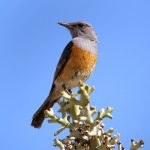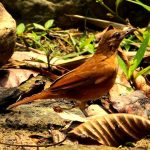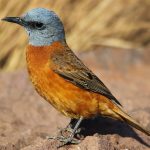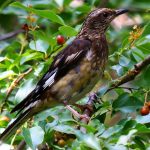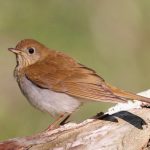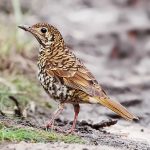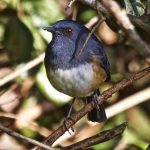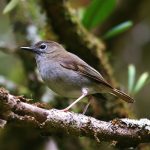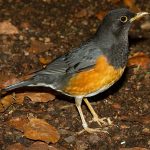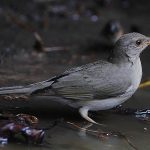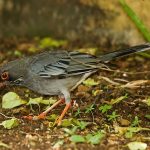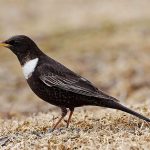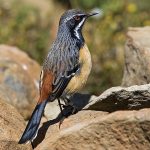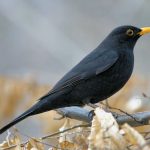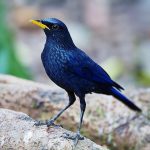Varied thrush
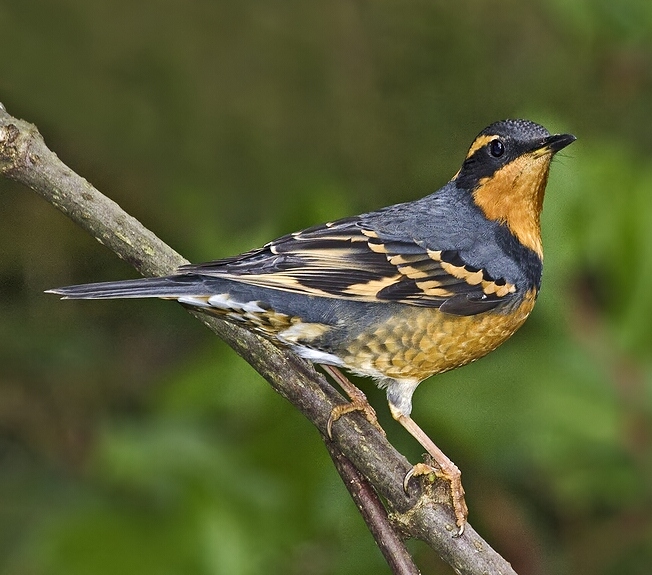
Zoothera naevius
 |
| Photo by Elaine Wilson (Tom Clark) |
Common name:
varied thrush (en); tordo-de-colarinho (pt); grive à collier (fr); zorzal cinchado (es); halsbanddrossel (de)
Taxonomy:
Order Passeriformes
Family Turdidae
Range:
This species is found from Alaska and north-western canada, along the pacific coast of North America down to northern California. The more northern populations migrate south to winter in south-western Canada, along the western United States and in north-western Mexico.
Size:
These birds are 20-28 cm long and have a wingspan of 34-42 cm. They weigh 65-100 g.
Habitat:
The varied thrush is mostly found in dense, moist woodlands, mainly coniferous forests in the boreal and temperate zones. They winter in various woodlands, parks and gardens.
Diet:
They feed on or near the ground, eating insects and other invertebrates, berries, seeds and acorns.
Breeding:
Varied thrushes nest in an open cup, built by the female using twigs, leaves, lichens and bark. The nest is placed in a low scrub, near a stream bank or at the base of a tree branch, against the trunk. There the female lays 2-5 greenish-blue eggs with light brown spots, which are incubated by the female for 12-14 days. The chicks are fed by both parents and fledge 13-15 days after hatching. Each pair may raise 1-2 clutches per year.
Conservation:
IUCN status – LC (Least Concern)
This species has a large breeding range and global population estimated at 26 million individuals. The population has undergone a large decline of roughly 75% over the last 4 decades, mostly due to deforestation and clear cutting, but they are not considered threatened in any portion of their range at present.
